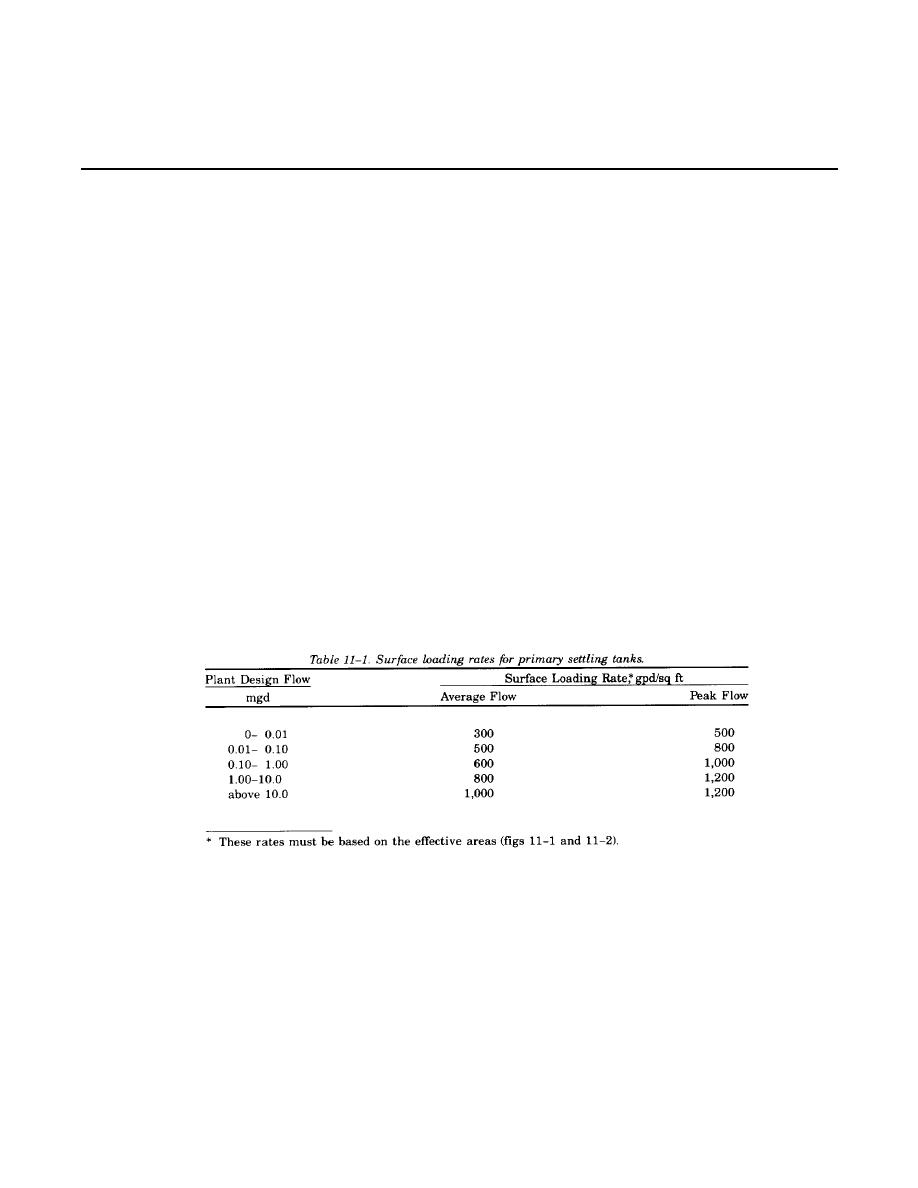
TM 5-814-3/AFM 88-11, Volume III
CHAPTER 11
PRIMARY TREATMENT
11-1. Function.
The purpose of primary treatment is to remove solids which are not removed during preliminary treatment
(chap 10). Processes which can be used to provide primary treatment include the following: 1) primary
sedimentation, also called clarification; 2) microscreens; and 3) Imhoff tanks. In most facilities, primary
treatment is used as a preliminary step ahead of biological treatment.
11-2. Primary sedimentation.
Sedimentation tanks are designed to operate continuously. They are usually rectangular or circular and have
hoppers for sludge collection. Most sedimentation tanks are constructed with gently sloped bottoms and have
sludge hoppers with relatively steep sides. Non--mechanized settling tanks are used only in very small
installations; the sludge moves to hoppers by gravity, where it is removed.
a. Function. Primary sedimentation tanks may provide the principal degree of wastewater treatment, or
may be used as a preliminary step in further treatment of the wastewater. When used as the only means of
treatment (no longer authorized in U.S. and Trust territories), these tanks provide for removal of settleable
solids and much of the floating material. When used as a preliminary step to biological treatment, their
function is to reduce the load on the biological treatment units. Efficiently designed and operated primary
sedimentation tanks should remove 50 to 65 percent of the suspended solids and 25 to 40 percent of the
biochemical oxygen demand.
b. Design parameters. The tanks will be designed for the average daily flow or daily flow equivalent to
the peak hourly flow that requires the largest surface area. Table 11--1 shall be used to select the correct
surface loading rate. All tank piping, channels, inlets, outlets and weirs will be designed to accommodate peak
flows. Use 3.0 times the average hourly flow if specific peak flows are not documented.
Each tank will be sized, as a maximum, for 67 percent of the plant design flow (facility designs will normally
include two tanks). At treatment plants with less than 0.1 million gallons per day treatment capacity, one unit
is acceptable when an equalization tank or holding basin is constructed with adequate volume to dampen out
peak inflow rates.
11-1


 Previous Page
Previous Page
